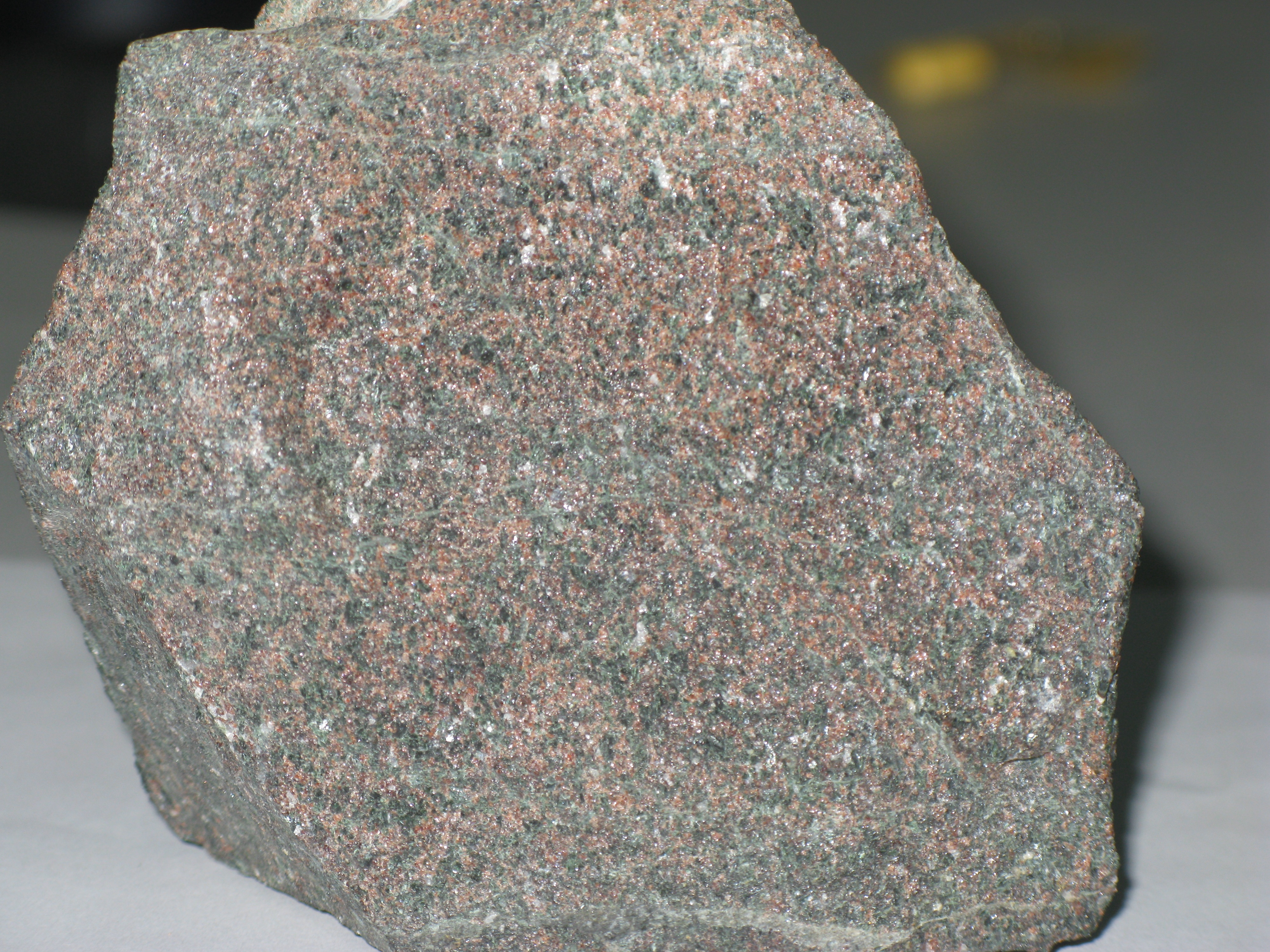New 'Thermometer' Helps Scientists Accurately Measure Rock Formation

Magnesium isotopes found in this eclogite from the Davie Mountains of China provide information as to the temperature at which the rock formed millions of years ago. The grains are garnets and the green ones are omphacites.
FAYETTEVILLE, Ark. – A University of Arkansas researcher and his colleagues have used magnesium isotopes to determine the temperature at which rocks form, which will allow scientists to better study the formation of the earth’s crust and mantle as well as the formation of meteorites.
Fang-Zhen Teng, professor of geosciences, and Wang-Ye Li, Yilin Xiao and Jian Huang of the University of Science and Technology of China report their findings in Earth and Planetary Science Letters.
“Knowing the temperature of rock formations is important to understanding the earth’s evolution,” Teng said. “We also can study extraterrestrial samples to know more about how meteorites formed and evolved.”
Of course, most rocks on earth have been rocks for millions and millions of years, making it difficult to determine their thermal history.
“We have to study the formation temperature of rocks indirectly,” Teng said. Several methods for doing so exist, but most do not give accurate readings at the high temperatures where rocks form. “How the temperature varies at depth within the earth’s crust and mantle is still uncertain,” Teng said.
The researchers studied magnesium isotope fractionation in eclogite, a metamorphic rock that contains the minerals omphacite and garnet, found in a mountain range in China. Eclogites form at high temperatures and pressures and often form from subducted ocean floor basalts that are drawn below the earth’s crust, and are brought to the surface during mountain-building processes.
Isotopes have the same chemical properties, but different weights, so some processes cause what looks like the same material to behave differently. In this case, the researchers looked at isotope fractionation, or the separation of isotopes into different areas within the rock. The magnesium isotope fractionation within a rock depends upon the temperature at which the atoms stopped moving within it, which is the time that the rock has formed.
The scientists found that the fractionation of magnesium isotopes is big at high temperatures, which allows researchers to then study it accurately. The researchers looked at other isotopes, but found the fractionation to be too small to measure precisely. The light magnesium isotopes move quickly to a low energy state (i.e., garnet), whereas the heavy isotopes prefer a high-energy state (i.e., omphacite). The proportion of light and heavy isotopes in each state in a given rock determines the temperature at which the rock formed. Using this magnesium isotope fractionation, the researchers can determine the temperature of rock formation to a higher precision. For example, if previous isotope “thermometers” only determined the temperature to a precision of within 50 degrees Celsius, then the magnesium thermometer can reach a precision of within 20 degrees Celsius.
By knowing the temperature of the rock formation, scientists will be able to determine the cooling rate of rocks at different depths within the earth’s crust and mantle. This will help them learn more about how the rocks cool down.
“This will help us determine how mountains were built. If we know the ‘cooking’ history, we can determine how fast the mountains were built and how the plates collide and evolve,” Teng said.
The researchers plan to collect samples from mountain building areas to further use this new tool.
Contacts
Fang-Zhen Teng, assistant professor, geosciences
J. William Fulbright College of Arts and Science
479-575-4524,
fteng@uark.edu
Melissa Blouin, director of science and research communication
University Relations
479-575-3033,
blouin@uark.edu
Headlines
Four Students Named Goldwater Scholars; Two Earn Udall Honorable Mentions
Four U of A students have received the prestigious Goldwater Scholarship, an award for top students in mathematics, science, and engineering.
Cross-Campus Collaboration Culminates in New Outdoor Geological Installation
Grand opening event to celebrate the new GeoLab installation at the U of A’s Gearhart Hall courtyard is set for May 3. The installation will be open to the public year-round.
First Students to Use Online Degree to Hone Nursing Leadership, Elevate Patient Care
Hanna Baxendale and Wendi Kimbrell will begin coursework in the Doctor of Nursing Practice-Executive Master of Business Administration program offered by the Eleanor Mann School of Nursing and Walton College.
Join the Office for Sustainability on a Final Cruise to Campus
Cruise to Campus Wednesdays have fostered a gathering space for individuals interested in biking to campus. Drop by the Old Main Lawn from 7:30-10 a.m. Wednesday for coffee, something to eat and conversation.
Fay Jones School Student Ambassador Program Gives Voice to Design Students
The student ambassador program at the Fay Jones School of Architecture and Design is built to connect top design students with their school, its alumni, its future students and others inside and outside the school.




